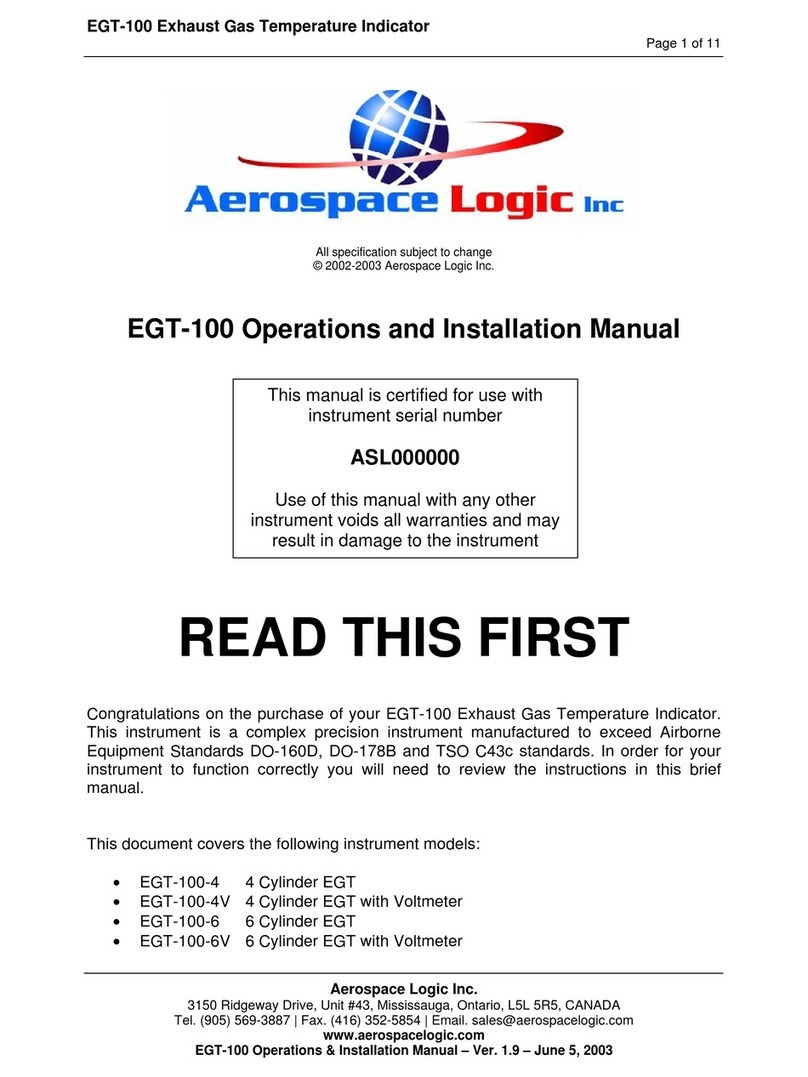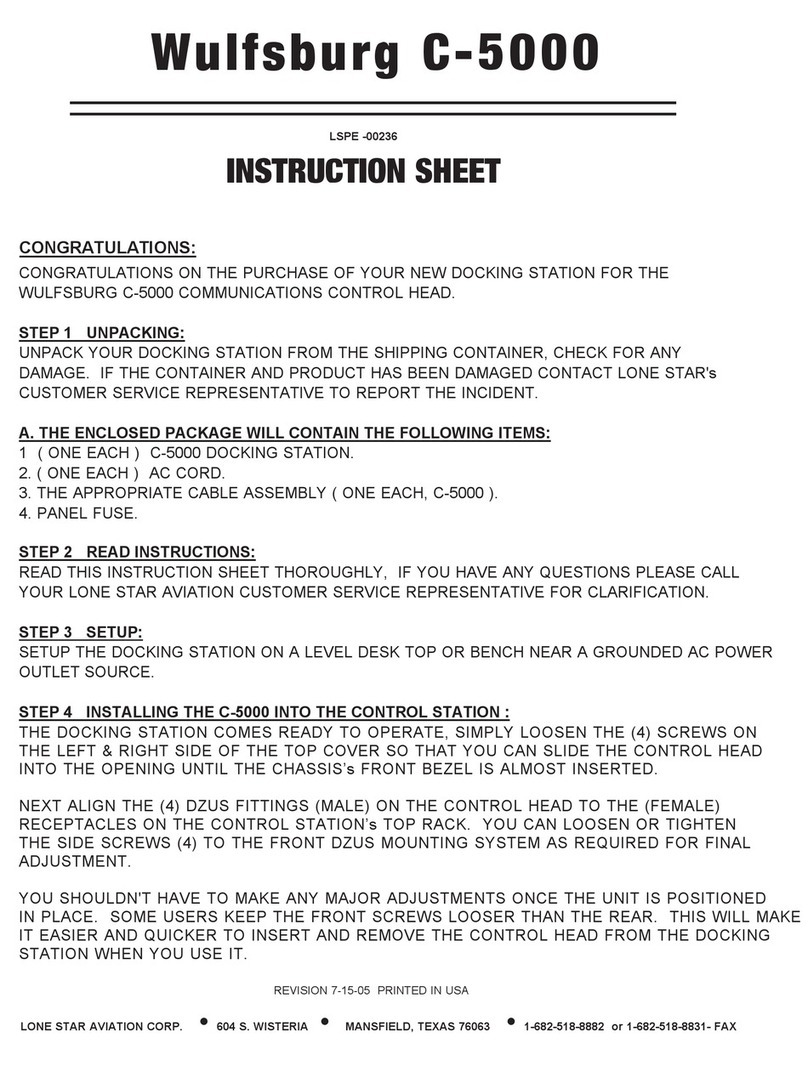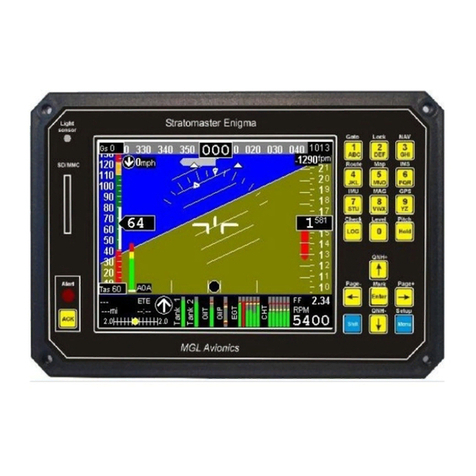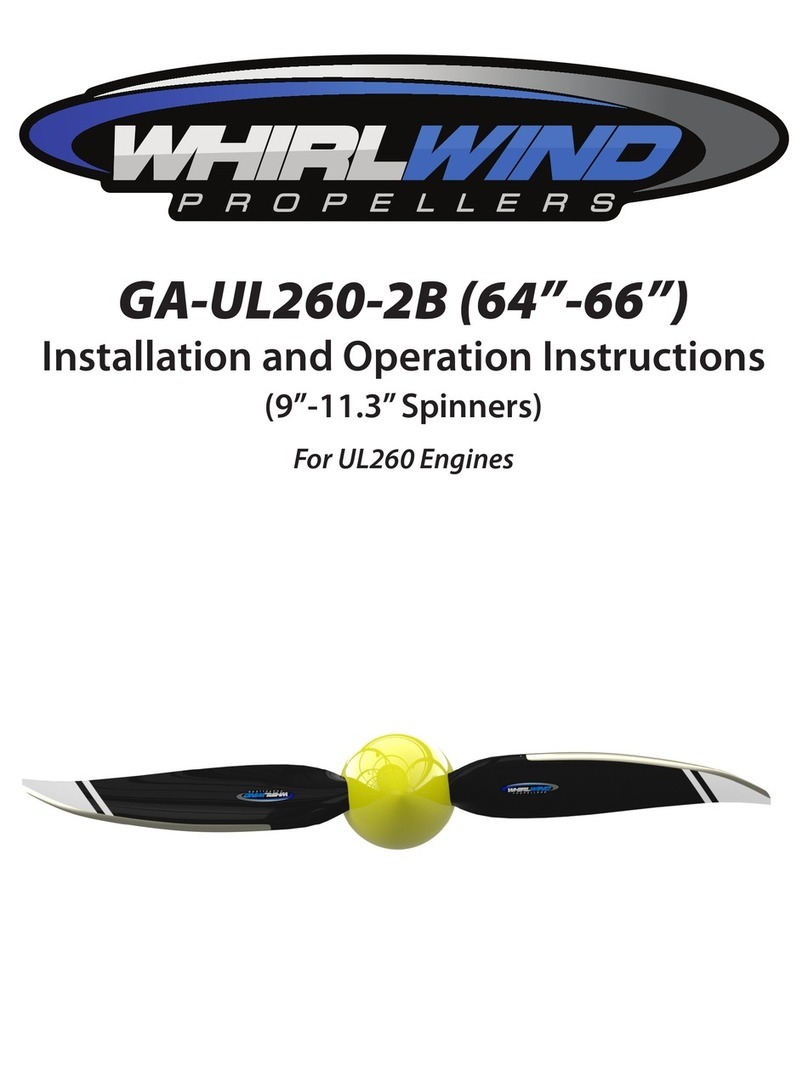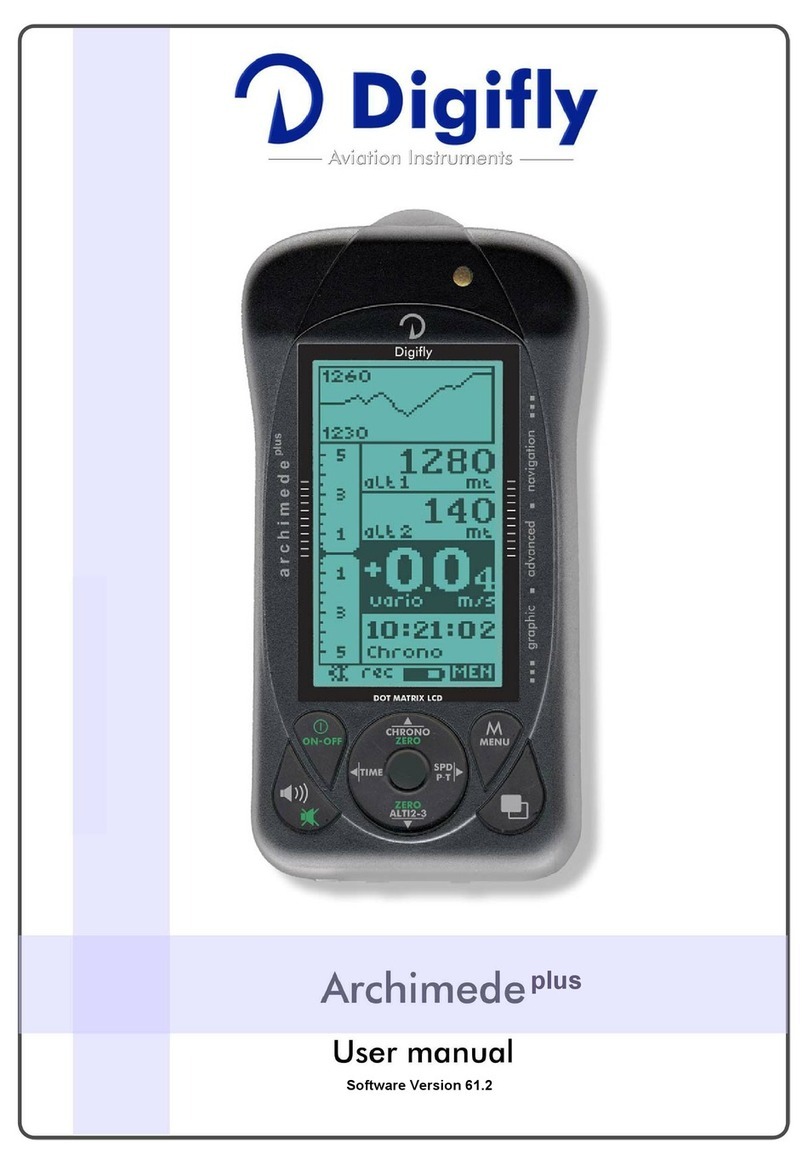Aerospace Logic CHT-100 Specification sheet

CHT-100 Cylinder Head Temperature Indicator Page 1 of 11
Aerospace Logic Inc.
3150 Ridgeway Drive, Unit #43, Mississauga, Ontario, L5L 5R5, CANADA
www.aerospacelogic.com
CHT-100 Operations & Installation Manual – Ver. 1.9 – June 5, 2003
All specification subject to change
© 2002-2003 Aerospace Logic Inc.
CHT-100 Operations and Installation Manual
READ THIS FIRST
Congratulations on the purchase of your CHT-100 Cylinder Head Temperature Indicator.
This instrument is a complex precision instrument manufactured to exceed Airborne
Equipment Standards DO-160D, DO-178B and TSO C43c standards. In order for your
instrument to function correctly you will need to review the instructions in this brief
manual.
This document covers the following instrument models:
•CHT-100-4 4 Cylinder CHT
•CHT-100-4V 4 Cylinder CHT with Voltmeter
•CHT-100-6 6 Cylinder CHT
•CHT-100-6V 6 Cylinder CHT with Voltmeter
This manual is certified for use with
instrument serial number
ASL000000
Use of this manual with any other
instrument voids all warranties and may
result in damage to the instrument

CHT-100 Cylinder Head Temperature Indicator Page 2 of 11
Aerospace Logic Inc.
3150 Ridgeway Drive, Unit #43, Mississauga, Ontario, L5L 5R5, CANADA
www.aerospacelogic.com
CHT-100 Operations & Installation Manual – Ver. 1.9 – June 5, 2003
1. Introduction
Your CHT-100 Cylinder Head Temperature Indicator will provide you with years
of reliable service and generally outlast the life of your aircraft. The instrument is
constructed from the highest quality components and has a design life in excess
of 100,000 hours.
It is the most reliable instrument of its kind. Gone are the days of questioning the
accuracy or operation of the instrument. No stuck needles, erroneous readings or
instruments that keep you guessing as to their operational status.
Every reading you will see displayed on your instrument has been validated at
least 256 times before you see it. This all happens in less than a second. When
you see the result you know the instrument is functioning correctly as it is
monitored by an independent microprocessor just to ensure that it is functioning
correctly. In turn the main processor validates the independent monitoring
processor. Any failure detected in either processor and your instrument display
will be shut down or an error message displayed – depending on the failure
status.
2. Display
The main display of the instrument displays a graphical representation of the
temperature of the selected cylinder on the bar display, provided the temperature
is within the defined limits set by the user. The lower four-digit seven-segment
display provides a mathematically computed display of the specific temperature.
The A M S switch allows you to select the various functions of the instrument.
When the switch is placed in the Aposition the instrument is placed in the
AUTOMATIC mode. In this mode it will select and display the information for the
hottest cylinder.
When in the Mposition the instrument allows MANUAL selection of the function
of choice. Available functions are: STEP, 1, 2, 3, 4, 5, 6, (5 and 6 only available
on 6 cylinder models) where the numbers correspond to the cylinder number to
be monitored. In the STEP mode the instrument will sequentially step through all
cylinders.
Moving the A M S switch momentarily to the Sposition will allow movement
between the manually selectable pages.

CHT-100 Cylinder Head Temperature Indicator Page 3 of 11
Aerospace Logic Inc.
3150 Ridgeway Drive, Unit #43, Mississauga, Ontario, L5L 5R5, CANADA
www.aerospacelogic.com
CHT-100 Operations & Installation Manual – Ver. 1.9 – June 5, 2003
3. Installation
Ensure that the thermocouple probes have been installed PRIOR to installing the
instrument. See Probe Installation for full details (Section 6).
The CHT-100 will fit any standard 2 ¼” aircraft mounting hole. Place the
instrument in the hole from the rear of the panel and then attach it with the four
screws provided. If you need to replace the screws, ensure that the threads do
not penetrate the instrument more than ½”. Screws that penetrate the instrument
further will cause severe damage to the instrument.
WARNING
This instrument is a highly sensitive and accurate instrument, however without
proper wiring and connections it is possible to induce temperature reading errors.
Please read and follow all instructions carefully to ensure proper operation.
The instrument has been software calibrated and never needs recalibration
provided no wiring modifications are made at installation time.
Now connect the supply and dimmer wiring. These wires may be trimmed to any
desired length.
RED Master switched 14/28V bus (Instrument is internally fused)
BLUE 28V Dimmer control (if required)
WHITE 14V Dimmer control (if required)
NEXT CONNECT THE BLACK WIRE TO A GROUND POINT ON THE ENGINE
BLACK Aircraft supply ground connected on engine ground point.
Wherever possible ensure that connection to the probe ends is made on the
cockpit side of the firewall. If this is not possible ensure that the junction between
the signal wiring from the instrument and the probe is in the coolest possible
location in the engine compartment.
Next connect the probe signal wiring. These wires are the red/white twisted pairs.
Each cylinder is identified by a color tag on the specific twisted pair.
Do NOT un-twist these cable pairs. They are designed to reduce signal noise.
Do NOT trim the thermocouple probe wires under any circumstances.
Where possible do NOT strap the signal wiring to other aircraft wiring.
Trim these wires to length if necessary, but do not remove the color code tags.

CHT-100 Cylinder Head Temperature Indicator Page 4 of 11
Aerospace Logic Inc.
3150 Ridgeway Drive, Unit #43, Mississauga, Ontario, L5L 5R5, CANADA
www.aerospacelogic.com
CHT-100 Operations & Installation Manual – Ver. 1.9 – June 5, 2003
Thermocouple signal cables are red/white twisted pairs. The colors listed refer to
the tag color on the wire pair. Green and yellow tags are only on 6 cylinder
instruments.
BLACK Cylinder 1 BLUE Cylinder 4
RED Cylinder 2 GREEN Cylinder 5
WHITE Cylinder 3 YELLOW Cylinder 6
If you have purchased a complete instrument and probe kit appropriate
connectors for interconnection of the signal wires and probe leads are provided.
If you have purchased only the instrument NO connectors are provided as there
is no way of determining what type of probes will be used. In this case the
installer is to provide the necessary connectors.
For installation of the complete kit, simply snap the connectors together for the
appropriate cylinders, slide the included heat shrink sleeves over the connection
and shrink to size. Take care in matching the correct color coded signal pair to
the correct cylinder.

CHT-100 Cylinder Head Temperature Indicator Page 5 of 11
Aerospace Logic Inc.
3150 Ridgeway Drive, Unit #43, Mississauga, Ontario, L5L 5R5, CANADA
www.aerospacelogic.com
CHT-100 Operations & Installation Manual – Ver. 1.9 – June 5, 2003

CHT-100 Cylinder Head Temperature Indicator Page 6 of 11
Aerospace Logic Inc.
3150 Ridgeway Drive, Unit #43, Mississauga, Ontario, L5L 5R5, CANADA
www.aerospacelogic.com
CHT-100 Operations & Installation Manual – Ver. 1.9 – June 5, 2003
4. SETUP
Once installed your instrument will require setup to match the specific engine
parameters as well the user defined preferences.
Instrument setup is only required when a parameter or display configuration is to
be changed. With proper planning you should only have to perform this function
once in the life of the instrument. All information is stored in the instruments
lifetime memory, which will be retained without battery power for up to 100 years.
To enter SETUP mode turn off all power to the instrument. Next press and HOLD
the A M S switch in the Sposition and turn on the power to the instrument. Hold
the switch in this position until SEt- is displayed. At this point release the switch.
NOTE: When in the setup mode the display bar will remain blank. The CYL
digit and the four digit display shows the parameter value and type as per
the enclosed instructions.
In order to set the manufacturer specified limits for your engine you will require
the manufacturer specified high and low limits. Please refer to your engine
operator’s manual for this information. Most engines will operate between 350ºF
and 435ºF.
CyLS (Cylinder Count Selection)
For a 6 cylinder instrument, moving the A M S switch to the Aposition and back
to the Mposition will allow selection between 4 and 6 cylinder operation.
For a 4 cylinder instrument, no choice of cylinder count is available. Simply
move the A M S switch once to the Sposition and release. The 4 cylinder
configuration will now be saved and the display will move to the next parameter.
Int (Intensity Source Selection)
Moving the A M S switch to the Aposition and back to the Mposition will allow
selection between I(internal intensity control) or E(external intensity control).
Select the appropriate intensity source and move the A M S switch once to the S
position and release. The intensity source will now be saved and the display will
move to the next parameter.

CHT-100 Cylinder Head Temperature Indicator Page 7 of 11
Aerospace Logic Inc.
3150 Ridgeway Drive, Unit #43, Mississauga, Ontario, L5L 5R5, CANADA
www.aerospacelogic.com
CHT-100 Operations & Installation Manual – Ver. 1.9 – June 5, 2003
L(Low Temperature Limit Set)
The low temperature limit should be set to the manufacturers recommended low
limit for correct operation. This setting determines the point at which the bar
indicator will begin to turn on. Values for this setting can range from 200ºF to
400ºF.
Moving the A M S switch to the Aposition and holding it there will allow the
temperature to increment. Initially the increment will be at a slow rate and then
speed up to a faster rate for easy selection. Once the increment is in the fast
mode it can be slowed again by moving the A M S switch once to the Mposition
and then back to the Aposition. Once the maximum (400ºF) has been reached
the count will start over at 200ºF.
Once the correct temperature has been reached, by moving between the Aand
Mpositions of the A M S switch, move the A M S switch once to the Sposition
and release. The low limit will now be saved and applied to all cylinders. The
display will move to the next parameter.
H(High Temperature Limit Set)
The high temperature limit should be set to the manufacturers recommended
high limit for correct operation. This setting determines the point at which all bars
on the bar indicator will turn on. Values for this setting can range from the low
limit plus 20ºF to 700ºF.
Moving the A M S switch to the Aposition and holding it there will allow the
temperature to increment. Initially the increment will be at a slow rate and then
speed up to a faster rate for easy selection. Once the increment is in the fast
mode it can be slowed again by moving the A M S switch once to the Mposition
and then back to the Aposition. Once the maximum (700ºF) has been reached
the count will start over at the preset low limit plus 20ºF.
Once the correct temperature has been reached, by moving between the Aand
Mpositions of the A M S switch, move the A M S switch once to the Sposition
and release. The high limit will now be saved and applied to all cylinders.
DonE
The display will now show the characters DonE and the instrument will restart. At
this point you have completed all the setup and configuration of the instrument
and it is ready for service.

CHT-100 Cylinder Head Temperature Indicator Page 8 of 11
Aerospace Logic Inc.
3150 Ridgeway Drive, Unit #43, Mississauga, Ontario, L5L 5R5, CANADA
www.aerospacelogic.com
CHT-100 Operations & Installation Manual – Ver. 1.9 – June 5, 2003
5. Operation
Once power is applied to the instrument it will display the model number and
a tESt message with the complete display lit. Immediately following this it will
display the temperature information and default to the STEP mode.
MANUAL MODE
In the manual mode (A M S switch in the Mposition) movement between the
different manually selectable functions is achieved by moving the A M S
switch once to the Sposition and then releasing it. The order of display is:
STEP Sequentially displays each cylinder temperature for 5 seconds.
In the STEP mode the instrument will display the STEP message for
approximately five seconds before starting the step process. Once started it
will step through all cylinders. When the last is reached, it will revert back to
the first.
1Display temperature information for cylinder 1
2Display temperature information for cylinder 2
3Display temperature information for cylinder 3
4Display temperature information for cylinder 4
For 6 cylinder instruments two additional displays are:
5 Display temperature information for cylinder 5
6 Display temperature information for cylinder 6
For instruments with the optional voltmeter function:
vDisplays line voltage present on the instrument supply bus
If the internal intensity option has been selected:
^Increase intensity
Moving the A M S switch to the Aposition will increase the brightness of the
display. Move the switch back to the Mposition when the desired brightness
is reached.
vDecrease intensity
To decrease the brightness move the A M S switch to the Aposition. Move
the switch back to the Mposition when the desired brightness is reached.

CHT-100 Cylinder Head Temperature Indicator Page 9 of 11
Aerospace Logic Inc.
3150 Ridgeway Drive, Unit #43, Mississauga, Ontario, L5L 5R5, CANADA
www.aerospacelogic.com
CHT-100 Operations & Installation Manual – Ver. 1.9 – June 5, 2003
If the instrument is left in the intensity mode without any changes for more
than eight seconds it will revert to the last selection. We recommend the use
of the internal intensity control for the most accurate control of the brightness
of the instrument.
AUTOMATIC MODE
Moving the A M S switch to the Aposition will place the instrument in the
automatic mode.
In this mode it will select and display the temperature for the hottest cylinder.
All cylinders are scanned in less than one second and the display updated at
the same rate.
This mode of operation is the single most important feature of this
instrument and should be used for all leaning and cooling function.
If the instrument is switched from the automatic mode back to the manual
mode it will revert to the last selected manual function.
For complete CHT use instructions and limits refer to your engine
manufacturers recommended procedures.
DISPLAY
The bar display will display a graphic representation of the selected cylinder
temperature between the defined low and high limits. Each bar represents
1/10 of the temperature range between the low and high limits.
For temperatures in excess of the high limit the two upper bars (red bars) will
blink. Once the temperature cools and is within the limits the blinking will
cease. The over temperature blinking does not occur in the STEP mode.
Temperatures below the low limit will only be displayed on the four digit
display.
If the temperature is below 100ºF the display will read COLd. As soon as the
temperature exceeds this limit it will be displayed.

CHT-100 Cylinder Head Temperature Indicator Page 10 of 11
Aerospace Logic Inc.
3150 Ridgeway Drive, Unit #43, Mississauga, Ontario, L5L 5R5, CANADA
www.aerospacelogic.com
CHT-100 Operations & Installation Manual – Ver. 1.9 – June 5, 2003
6. Probe Installation
NOTE: This section refers primarily to installation of probes supplied as a kit
with the specific instrument. For installation using existing or owner supplied
probes please see the specific probe manufacturer information.
The instrument will support all grounded and ungrounded probes that meet
the requirements listed in the Specification Section.
Thermocouple / Signal Wire Junction
Where possible, plan the installation such that the junction between the
thermocouple and signal wire takes place on the cockpit side of the firewall. If
this is not possible ensure that the junction is in the coolest possible location
in the engine compartment.
Ensure that ALL thermocouple leads are strapped together at the junction
point. This will further eliminate the possibility of any ground loop problems.
Connection
Thermocouple leads are marked with red (negative) and white (positive)
sleeves and match the corresponding red and white twisted pair signal wires.
Simply snap the corresponding connections together, slide the heat shrink
sleeve over the junction and shrink to size when installing the instrument.
For installation of the thermocouple probe see the illustrations below:
For Bayonet Type Probes:
For Ring Type Probes:

CHT-100 Cylinder Head Temperature Indicator Page 11 of 11
Aerospace Logic Inc.
3150 Ridgeway Drive, Unit #43, Mississauga, Ontario, L5L 5R5, CANADA
www.aerospacelogic.com
CHT-100 Operations & Installation Manual – Ver. 1.9 – June 5, 2003
7. CHT-100 Specifications
Dimensions:
•Fits standard 2.25” mounting hole
•2.45” X 2.45” X 1.60”
•2” viewing area
•Weight: 10oz (4 cyl.) / 13oz (6 cyl.)
Display
•Custom design color bar display
•Multi-color sunlight visible
•InGaAIPGaN LED technology
•100,000 hours operating life
•Analog and digital readout of temperatures
Maximum Ranges
•0ºF – 700ºF. Displays 100ºF – 700ºF as
actual temperature and 0ºF – 99ºF as
“COLD”
•Voltmeter: 6.0v to 32v (optional)
Accuracy
•1% of range per TSO (SAE AS8005 Class
IIa instrument classification)
•Voltmeter: 1/10 Volt over full operating
range
Safety
•Color coded temperature values
•Visual high temperature alarms for each
cylinder
•Dual processor monitoring with one second
error shutoff
•Internal over temperature shutoff
•Floating point mathematical compensation
for thermocouple sensor linearity
•Minimum 256 times measurement
validation before display
Operating Temperature
•-15C to +55C
•5F to 131F
Power Consumption
•370mA Max (daytime operation)
•50mA Min (nighttime operation)
Display Units
•ºF – temperature
•Volts – voltmeter (optional)
Display Pages/Functions
•AUTO – automatically select and display
hottest cylinder. One second scan rate for
4/6 cylinders
•STEP – sequentially step through each
cylinder with five second intervals
•1 – 4/6 – manually select and display any
cylinder information
•High limit alarms (visual)
•Integrated voltmeter (optional)
•Two brightness selection pages (internal
intensity selection)
Intensity Control
•Programmable user option
•External using rheostat type dimmer
•Internal selection programmable from the
front panel
•256 level of brightness
Linearity
•Mathematical compensation over the full
operating range
Operating Voltage
•6V-32V DC
Thermocouples Supported
ONLY TSO’d thermocouples that possess the
following characteristics:
Recommended type Westach series 713 CHT
probes (either bayonet or ring type):
•Type J with outputs as listed:
•100ºF – 0.72mV
•200ºF – 3.69mV
•300ºF – 6.72mV
•400ºF – 9.81mV
•500ºF – 12.90mV
•600ºF – 15.96mV
•700ºF – 19.04mV
All specification subject to change
© 2002-2003 Aerospace Logic Inc.
This manual suits for next models
4
Table of contents
Other Aerospace Logic Avionic Display manuals
Popular Avionic Display manuals by other brands
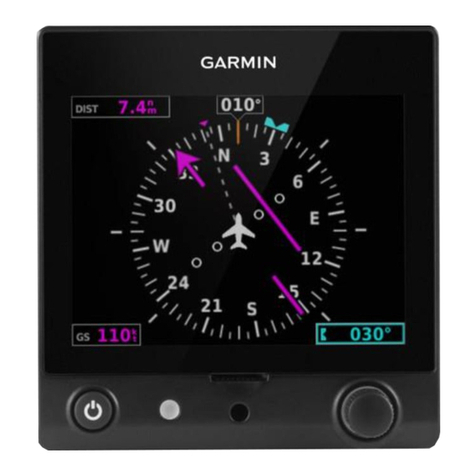
Garmin
Garmin Approach G5 - GPS-Enabled Golf Handheld Maintenance manual
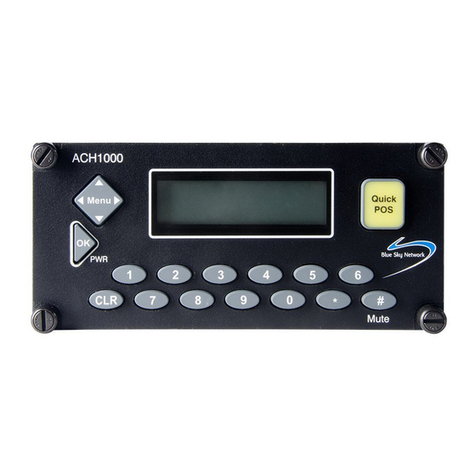
Blue Sky Network
Blue Sky Network ACH1000 Quick instructions
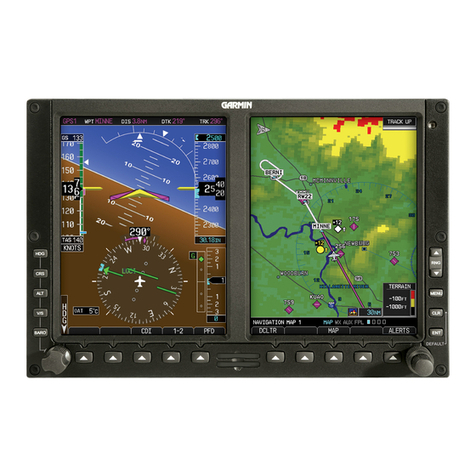
Garmin
Garmin G600 pilot's guide
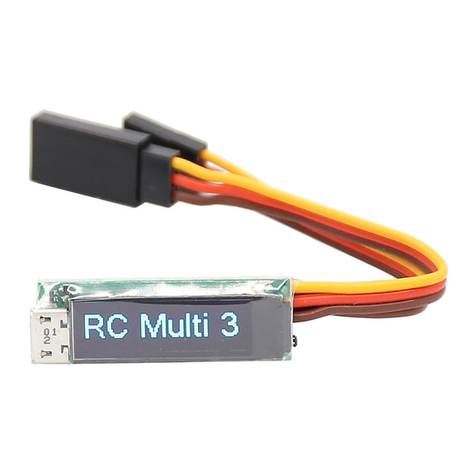
RC Electronics
RC Electronics RC MULTI 3 manual
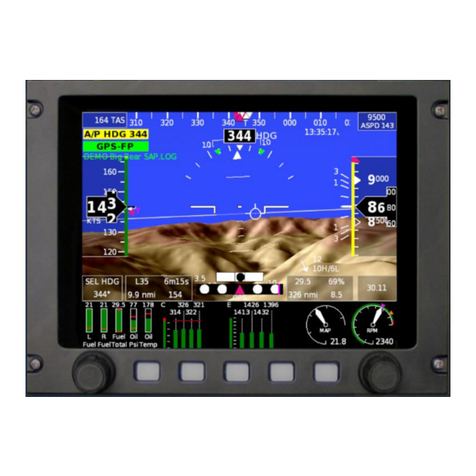
GRT Avionics
GRT Avionics Sport SX installation manual
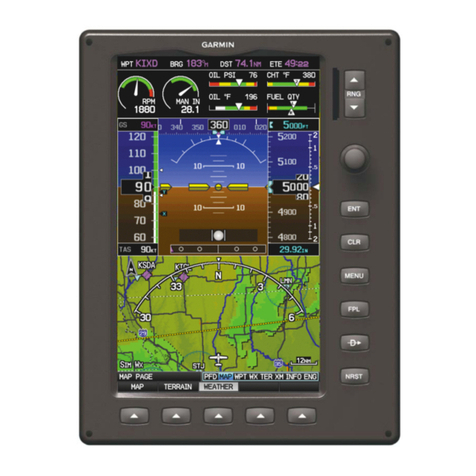
Garmin
Garmin G3X Touch Quick reference guide
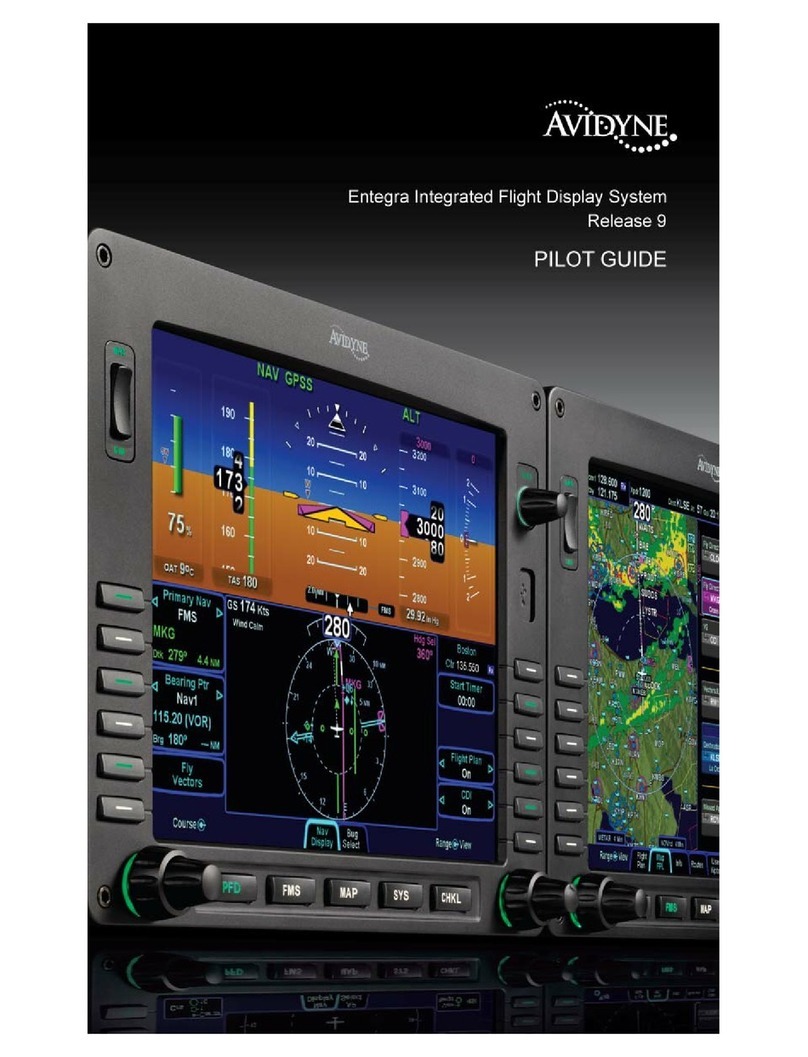
Avidyne
Avidyne Entegra pilot's guide

Garrecht Avionik
Garrecht Avionik VOLKSLOGGER user manual
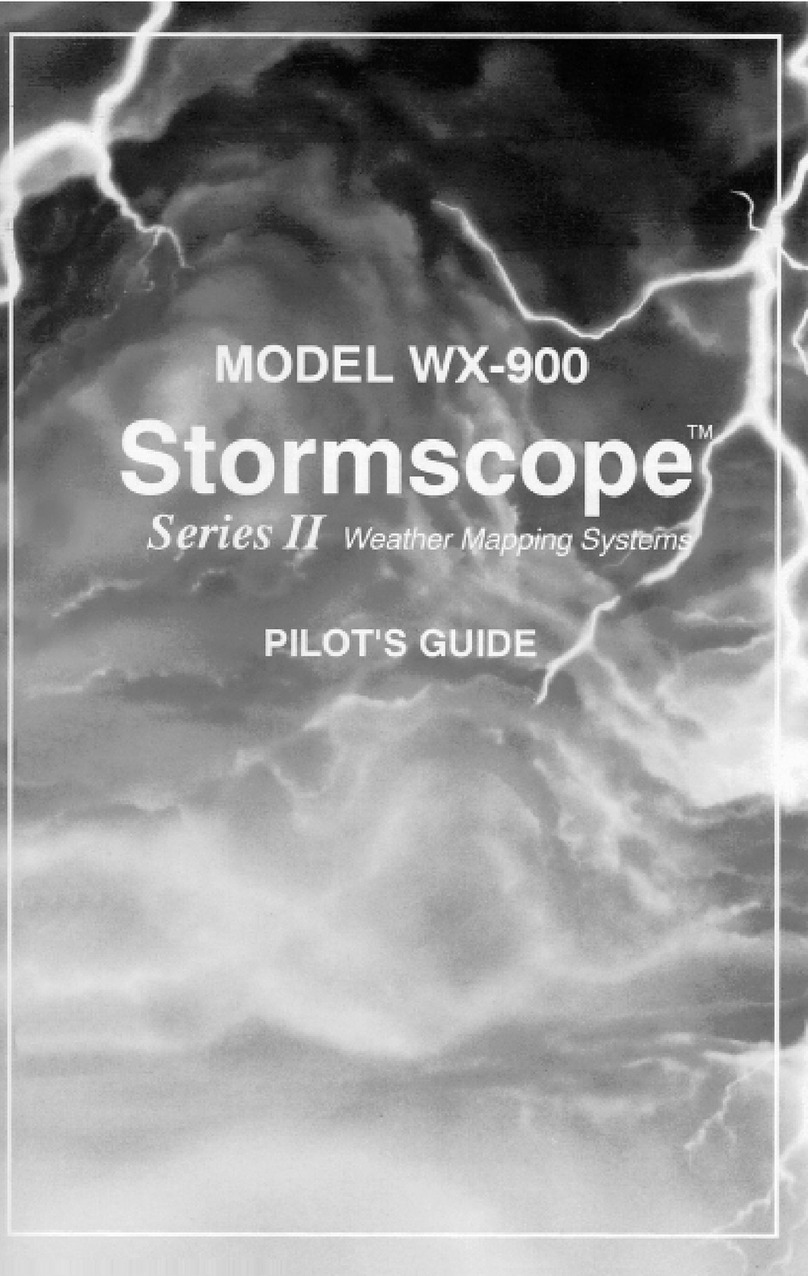
BFGroodrich
BFGroodrich Stormscope WX-900 Pilot's manual

trig
trig TMA45 operating manual
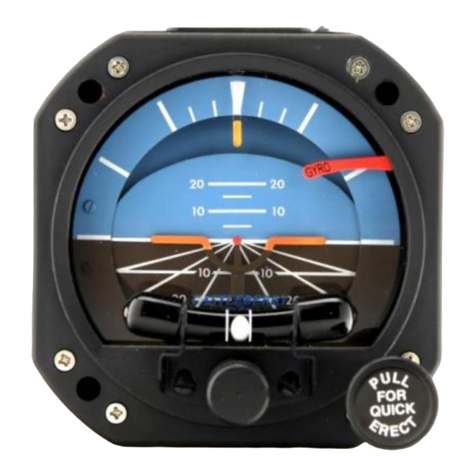
Castleberry Instruments & Avionics
Castleberry Instruments & Avionics 300-14EL Selection and Installation Guide
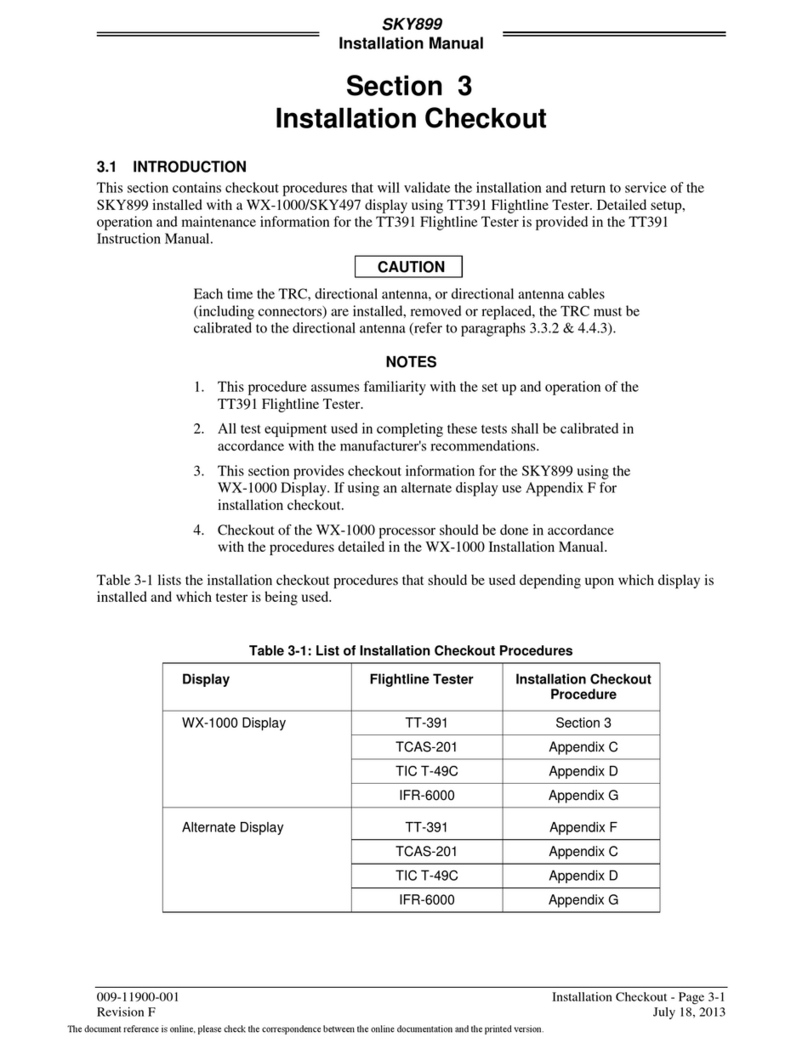
Skywatch
Skywatch SKY899 installation manual
